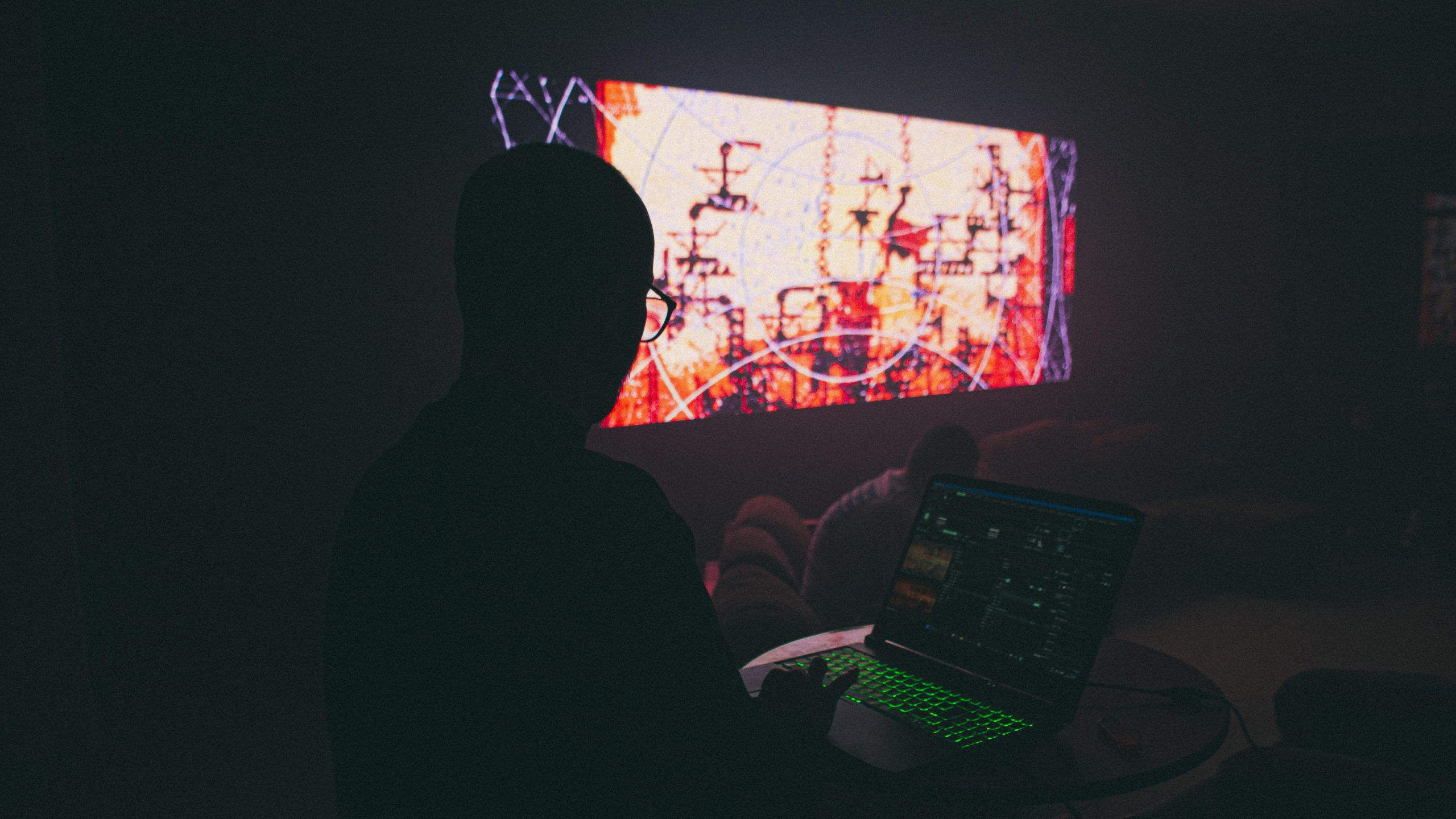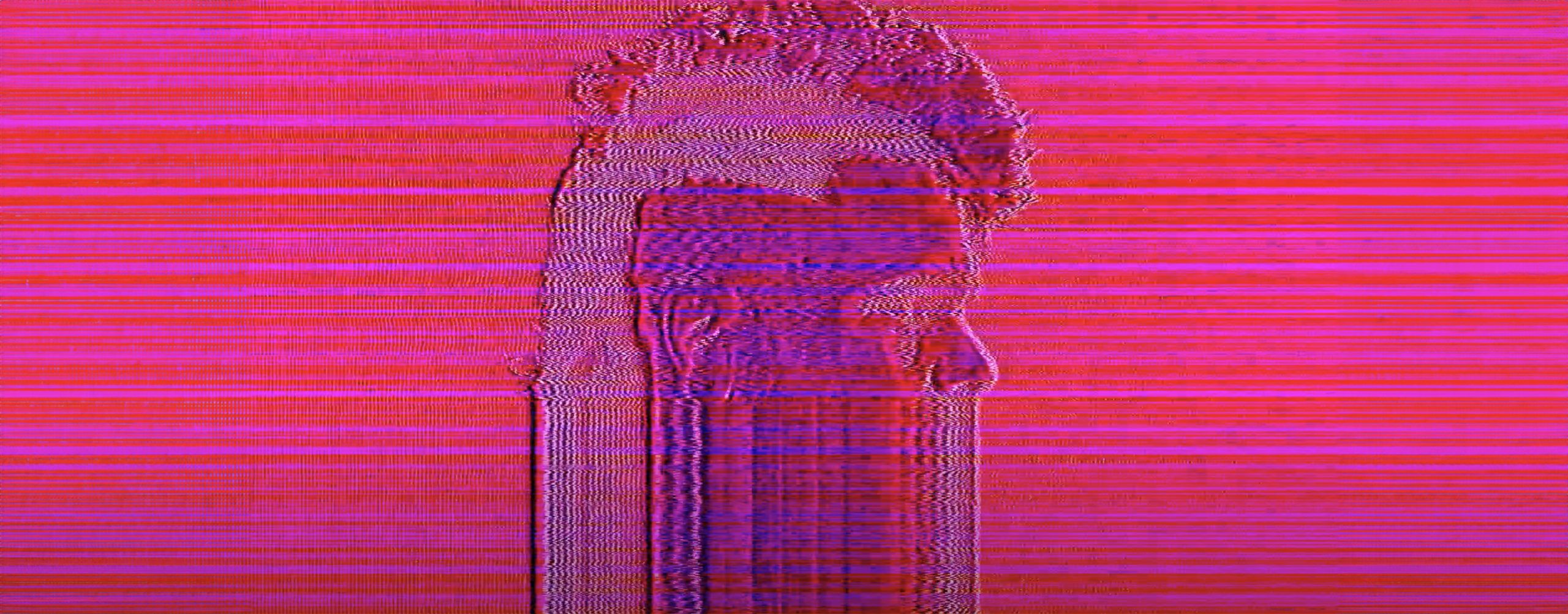In this exclusive interview, talented visual artist Jaime Agurto Beroíza aka Cufillo takes us on a journey through the evolution, from his perspective, of the visual arts and projection in the Chilean nightlife scene. From humble beginnings to massive festival collaborations, Cufillo shares his perspectives on the intersection of art, music and technology in the world of electronic music. He discovers how human creativity remains essential in a world of increasing artificial intelligence influence and how visuals can transform the live event experience.
My experience in the entertainment industry in Chile has allowed me to witness a significant change in the nighttime audience. Previously, the audience was limited to consuming the typical nighttime offerings, but now they are looking for more enriching experiences. In this context, light art has emerged as a key element accompanying the music at events, and producers have begun to invest in technology, such as LED screens, to elevate the quality of the experience. This evolution has led to the creation of a community of Video Jockeys (VJs), although we are a discrete and small guild compared to other professionals in the music industry.
What I find particularly interesting is how VJs have defied the tendency to keep a low profile. What I find particularly interesting is how VJs have defied the tendency to keep a low profile. In this sense, there seems to be an “unwritten manifesto” among us, where it is valued that our work speaks for itself rather than standing out as individuals. However, this attitude has had its consequences, as we often find ourselves in a forced silence that makes it difficult to create professional links, unlike DJs, who have a consolidated and diplomatic circuit.
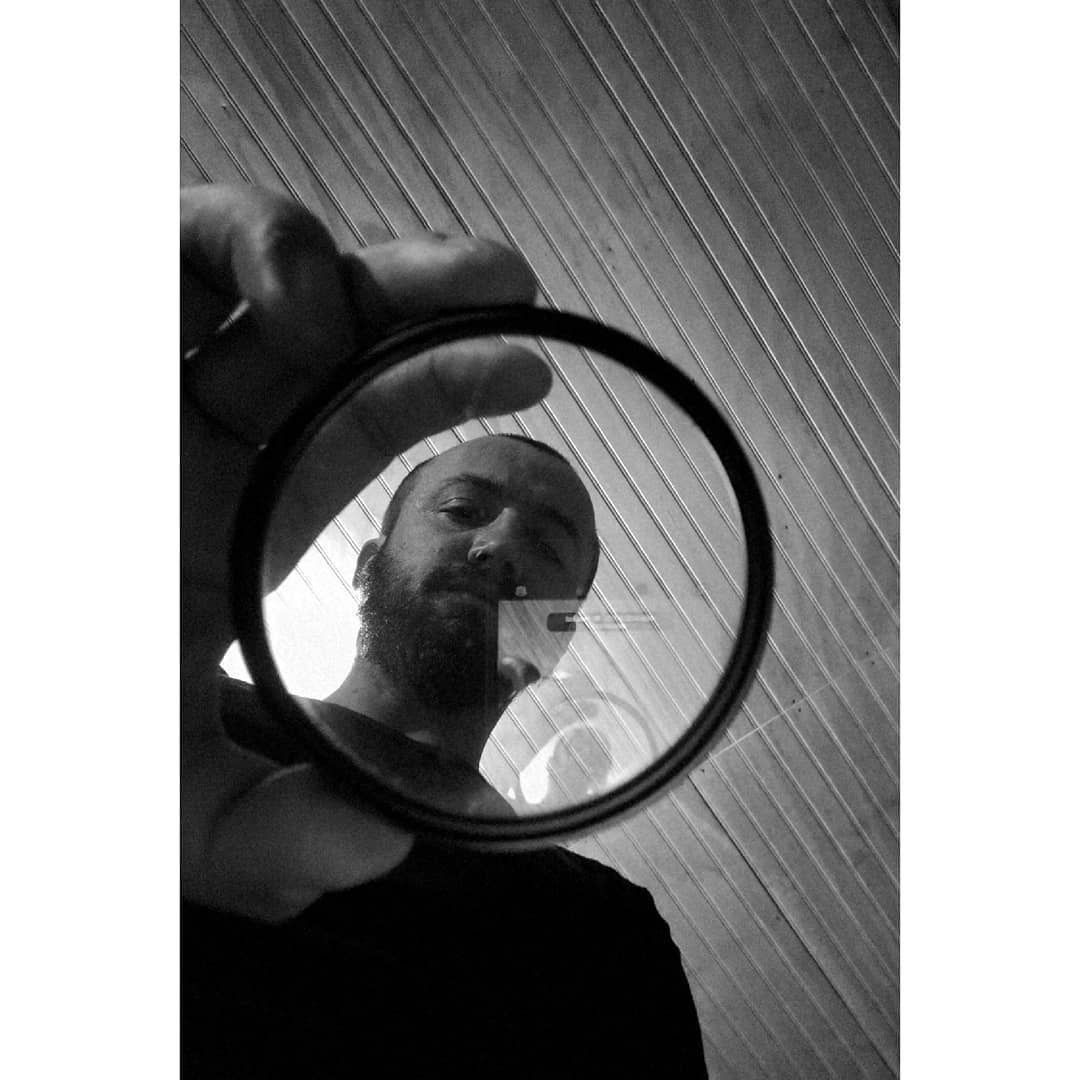
My own journey began with history and a subsequent immersion in the world of cinema. During my film studies, I came across a concept that changed my perspective: “cinema and non-cinema”. This term focused on unrestricted experimentation, challenging the traditional categories of documentary and fiction filmmaking. This idea opened up a world of creative possibilities that deeply intrigued me.
For me, it was a turning point when a friend, who was a producer of parties with a gothic style and dark electronic music, suggested the idea of incorporating visual elements to the parties. We thought about the possibility of adding surreal cinema, and this idea started to come to life. So I decided to show my work in what we know as “the after”, events that technically required less resources and usually took place in dark and empty spaces. Despite early resistance due to the visual projections, over time people began to consider it an essential part of the nightlife experience.
At that time, I began to share personal projects that, at first, were not intended to complement the music, but rather to enrich it with a unique visual narrative.
I have always seen my work as a beautifully romantic profession because, through technology, I can apply ideas that have been developed throughout human history for over a thousand years. The history of visual projection goes back to the shadows generated by the light of a bonfire in the allegory of the cave, the Chinese shadows in ancient China, the Arab camera obscura in the 4th century and even the first cave paintings. Thus, what I do connects in a natural and primitive way with the visual storytelling that has been part of the human experience since its beginnings.
Nowadays, my main goal is that people who attend events live an experience that goes beyond simply listening to music. I defend this idea with passion, as I believe that we have ceased to be simply decorative elements to become visual storytellers. In a period of 6 or 7 hours working from my computer and projecting visual experiences, I have the unique opportunity to tell stories and leave a lasting impression on those who participate in these events.
How is this relationship between history and cinema evolving?
I don’t have it very clear, in terms of milestones. I remember when I was a kid I once bought Slipknot’s Iowa, the cassette, and I thought it was so superb musically that I grabbed a tiny camera and made video clips at home, with candles and lights. I would play on the radio with the music of the cassette, and I was looking for a way to visually make everything take another color, another form.
After that I suspended any kind of interest in this, I went to university and studied history, and in my last year I dedicated myself to reconstructing the oral history of a neighborhood that disappeared because a mall was installed in the city of Puerto Montt.
The Estación neighborhood had a very cultural life, very bohemian, also commercial, but on a village scale.
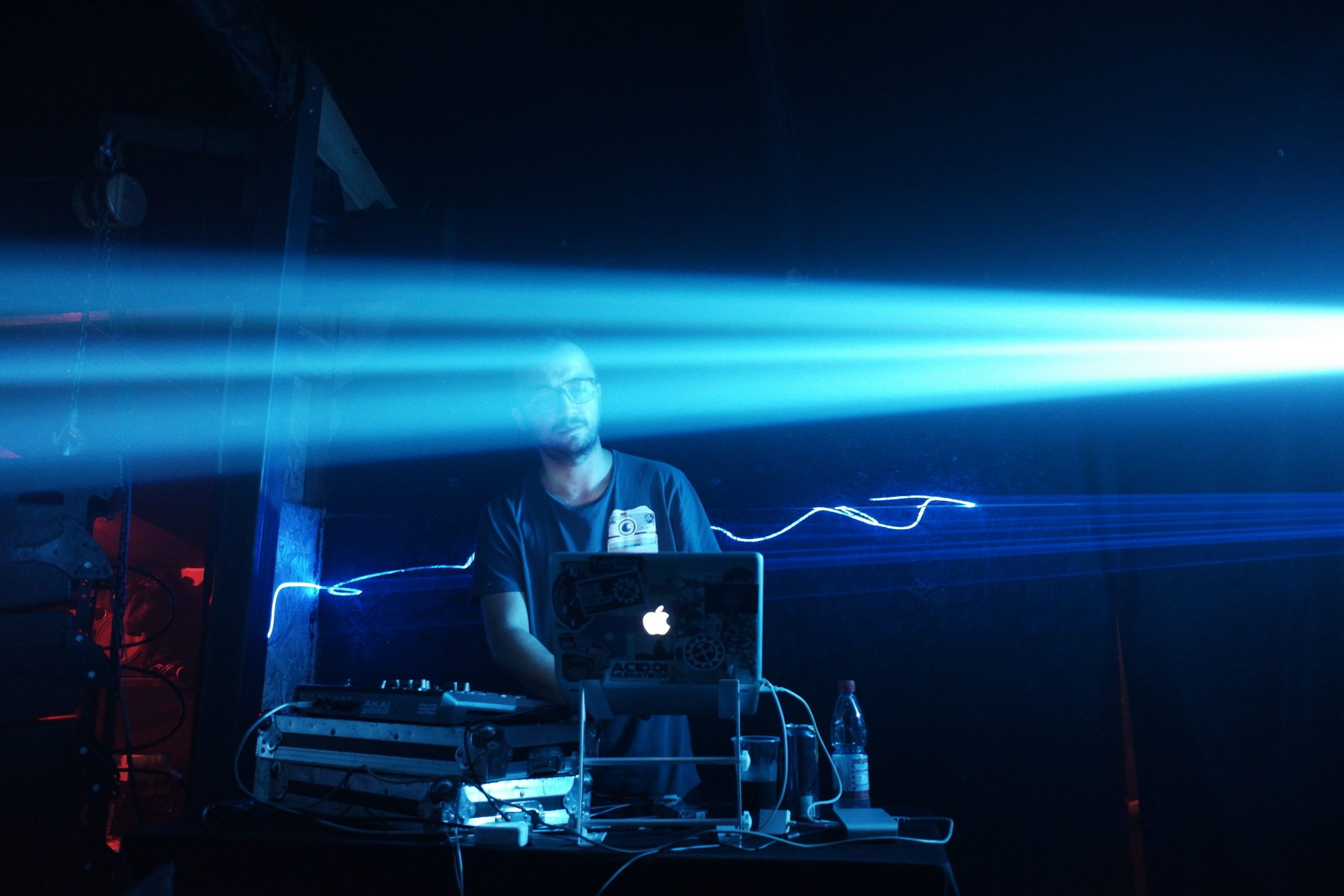
When the mall arrived, it swept away the whole neighborhood. And that story that was not told, that disappeared along with all those families, moved me deeply. I began to work with oral history, interviews, a lot of qualitative data. And then I said: this has to be recorded, the old people I am interviewing today, tomorrow they are going to die and this story cannot be lost, and then I took the camera again, but I did not know much.
Beyond what was instinctively operative, I did not have the language or the method, so it occurred to me at the end of my degree in history, with my thesis in hand, to apply for a master’s degree in documentary film at the University of Chile. I was accepted, and I went straight to study that methodology. My thesis work there was directly the non-film, to narrate, to tell. Under this concept there were many ways of working, there was a non-fiction circuit, but not documentary cinema either, called film footage, which was like a collage in which pieces of different films were joined to make another film. That blew my mind, a huge series of fragments that had nothing in common. That’s when I started to grab files that didn’t necessarily have a link to an event to tell a story, and I think that’s when I got the idea that I could take this to the party, although at first it was the after party.
How did you start to relate to electronics from there?
I had a very vague knowledge of electronics. In the search for tools in documentary filmmaking, I think it was the city of Santiago that gave me that input. I came from Puerto Montt with a whole culture of rock, of the tocata, but a friend who was a very good DJ and me being very good friends with him, I got into electronics like an anthropologist who goes to his field work to investigate how and what was the scene at that time. We are talking about 2017.
The electronica I found was very different from what I had as input. In Santiago I listened to Bitman and Roban, DJ Raff, who were good references and sounded elsewhere, but I was discovering a whole scene that perhaps in adverse geographies, there were trends that came out of confinement. In Puerto Montt there was no house, electro, or tech house. Here, dark wave, industrial techno, and dark metal, a very dark, very medieval wave, was played in the concerts. I’m getting into a very dark niche, very dark, and I realize that there are producers and groups that are doing other kinds of things. That’s how I found out that Puerto Montt had more than 11 years of scene, with different niches in different parts of the region (south of Chile); Valdivia, Puerto Varas, Punta Arenas.
I got involved as a witness that there was a huge spectrum, and my few social skills did not easily lead me to those areas, but over time people realized that there was a crazy guy who went up and down with a data at parties and suddenly showed up. A lot of people even said to me “he puts pure webadas, but they are super interesting” and that seemed interesting to me as a term, so that people could learn from this. I conditioned myself and started to make videos that were more recognizable, I felt that I had to do that job to install that this was necessary and hopefully not only at parties. I went into another world, digital graffiti, putting myself in any part of the city with the data and throwing a message, and I did it for hours from certain issues and contingencies, and always in a bad way, from an imaginary countercultural trench, I had all that stuff. Then came the social explosion and I took off. I had bought a more powerful data, so I could project on a building. I took that discourse to the party again, and I realized that it was a bit toxic too, projecting all this hatred and rage that one threw in the street as graffiti to the electronic party. It took me a long time to realize that I had to stop bringing my work to what was the urgency and demand of the moment, and I would dare to say that in the last few years I have been able to take my work to the electronic party. I established a proposal that I defend to the death and for which I am fortunately recognized in some spaces.
I feel that today the profession has been dignified, that it is super simple and super personal; one gives a lot of oneself in what one projects and shows, and people are taking it from that perspective.
I have received a lot of criticism of the type “this asshole doesn’t marry anything” and I think there is a lot of that culture of having to be faithful to something, but it is also part of maturity to lead this way. I didn’t think it was going to turn into a career or a profession.
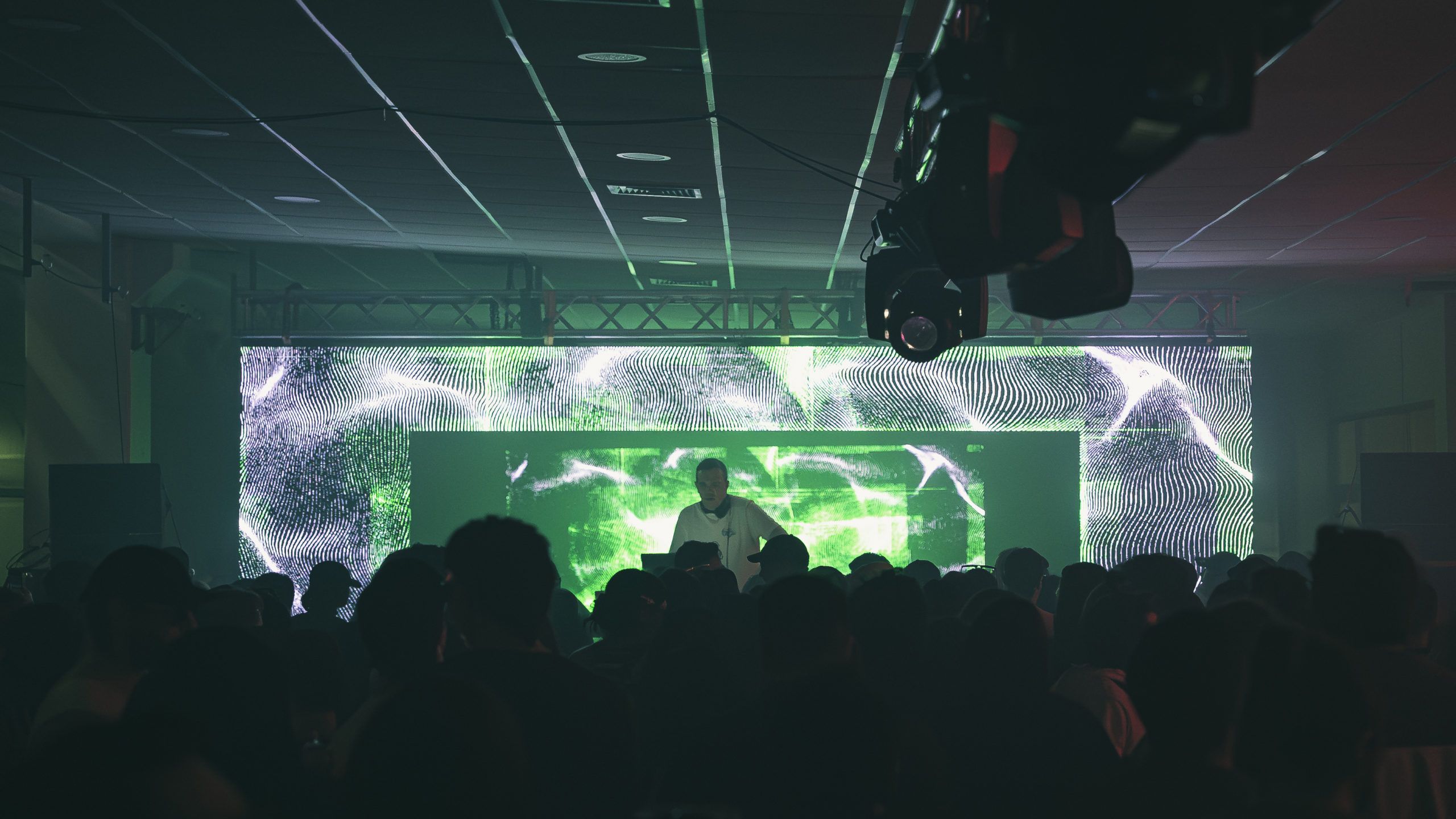
What resources did you use when you projected? How did you select?
Primero lo que tenía a la mano, películas que me llamaron la atención en algún momento. El periodo entre 1920 y 1938 en Europa, y en México con la llegada de Buñuel, hubo un surgimiento de cineastas que estaban viendo más allá del stop motion, o del documental incipiente, estaban haciendo un trabajo a partir de la imagen pero estudiando el alcance. “Hasta dónde puedo llegar con el aparato cinematográfico”. Eso me dejó alucinado, sobre todo el surrealismo mágico de principios del siglo XX. Como era en blanco y negro, y era bizarro en general, funcionaba muy bien con la estética dark wave, con el “lado más oscuro” por así decirlo.
Por cierto, las combinaciones eran muy básicas. Las fiestas se iluminaban con luz roja, así que el blanco y negro funcionaba muy bien. Acondicioné mi material según las condiciones espaciales de cada evento, le di esa intención.
I worked with medium-range projectors, and a computer, a software not for production or editing but for live mixing that allowed me to make transitions and even program this speech. What I projected were basically slogans, I used headlines, news; the revolt of the 18th, the constitutional movement, the previous darkness of repression. There were artists in Chile who were committed to the dissemination of what was happening, so they left their google drives open with their projects, and there was a sort of communion between people who had data and projectors and we shared the materials by whatsapp, devoting a lot of time to projecting.
All under the same principle: if you had a computer and a data, you could project. It was not a question of how good the projector was, or the machinery, but rather the desire to project. Circumstances also had an impact. It had an added value if you projected in a place or structure that had been part of some situation.
I remember that I made a projection with Huenante’s ID card, who is already consigned in the history of our country as the first disappeared detainee in democracy. He is a boy from Puerto Montt, from a highly vulnerable sector. He was detained by carabineros and after that he disappeared and after that many, many years have passed. For the 13th year of his disappearance, I took his ID card and projected it in various parts of Puerto Montt: “Where is Huenante? That went down very well with the family, as a sort of commemoration, so as not to forget. That situation made me understand in another way, on the road to maturing in my profession, that I have a responsibility. That forced me to reflect: things are happening and I am going to have to invest. Then I thought about the technical resources I have so that the craft can improve, and I found myself for the first time in the situation of having to spend money, to present an imaginable proposal to think about where I want to go and what I have to invest.
Today, as a content creator and live mixer, I work with a computer precisely for editing. I have had to spend a lot of money to buy good software that is up to date, so that the work is not left half done. I work with applications like, for example, Cinema 4D, TouchDesigner. Now I’m getting into something else and it has to do with Hydra, which is a platform that allows you to work with code and to create collaborative workflows. You can even do live coding performances with other people on screen, and people watch the animation and the codes that are created so that the animation is transformed. This can be connected to sound machines, making the animation alter with the sound as well. I’m going in that direction right now, as a beginner.
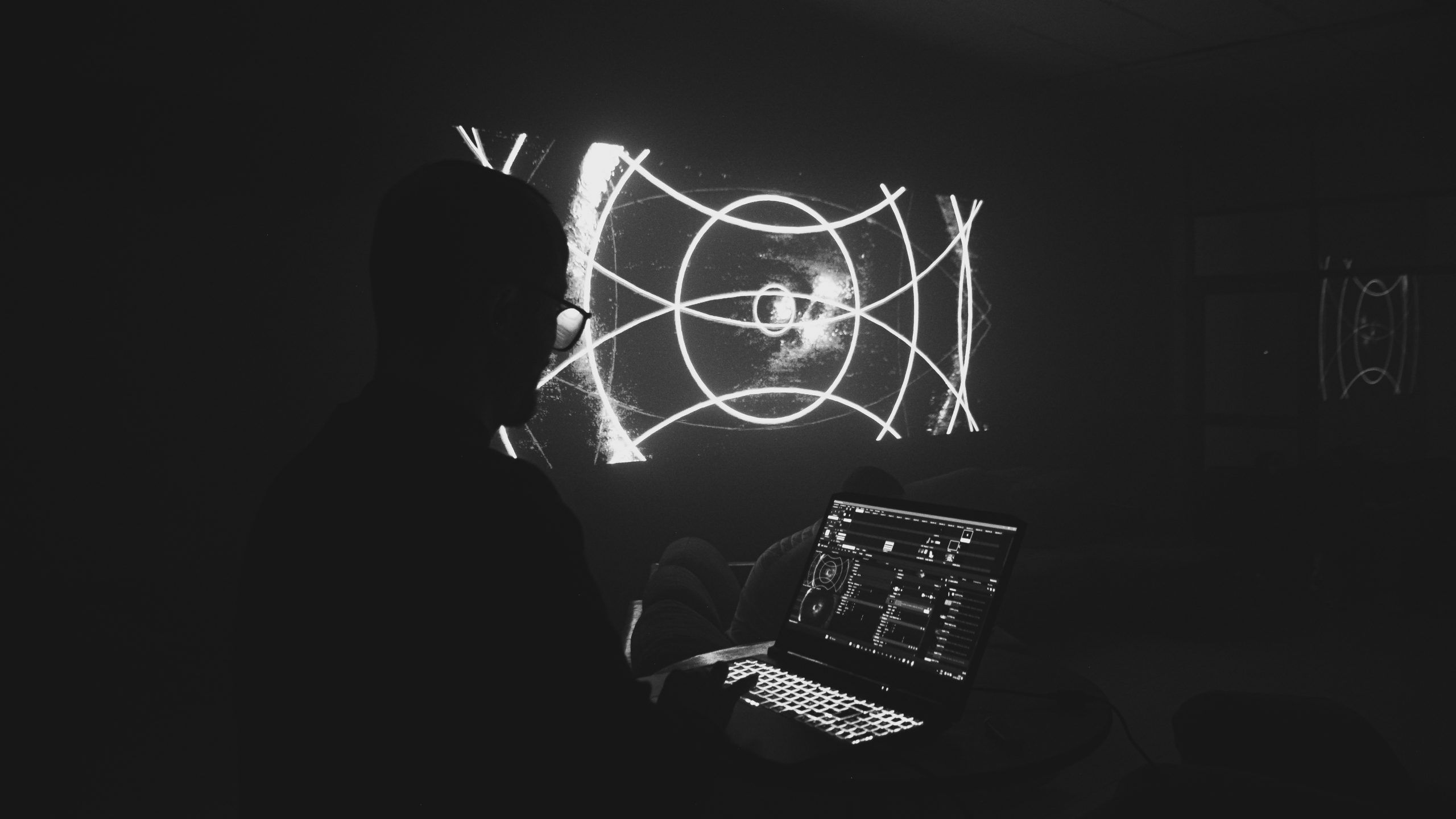
While I’m learning, I’m working and editing my material, working remotely, which is super new for me. It happened to me with Sonar, for example. I prepare the material, I have a script, we talk with the artist about the proposal he wants, we design step by step, each animation, and then at the festival or in other places, the artist gets a visual operator and that operator manages everything I have put together from the script.
In your evolution as an artist, and taking into account the visual as well as technical and technological resources, do you think that artificial intelligence helps your discipline, or that it can take away that which is proper to the thinking human being?
Today we see in the media about the opportunities offered by AI. Others (the more conspiracy-minded) say that we must be careful and respect it, in short. There is no doubt that AI has settled in, not to go away. In that sense, artistic creation from AI is nothing more than a resource, a strategy, a method to achieve something. I don’t think it can replace the human. I have constantly referred to the fact that what I do is a craft, and the craft as such implies a work, which comes from the intellect and the physical and human mechanics. From the ideas I go to a physical peripheral that is the expression of the ideas I have in mind, and from there, I can alter and modify at will what I want to happen on screen. That is simply, in the end, the expression of a human being that feels, and as a subject that feels, seeks from color and form, to convey something. This is something that the AI does not yet reproduce. When the AI feels, when it reaches the stage of natural language (which I believe is where it is heading), it will come as close as possible to feeling. That’s a long way off, a universe of possibilities. I think, even if it happens, it’s never going to be the same as what we as human beings want to reproduce.
Well, I work in a University, and I have already received projects done by AI.
When you strip the text, you can see the inconsistencies, you can see that this is still learning. And it makes me panic, I like dystopia, so I have that thing of hopefully it will happen, but not so soon, that the machines will reveal themselves and come to take revenge on human beings! It’s a bit scary, but I think that moment will come, although what human being will be able to afford the machines required for this? Let’s think that first it has to be democratized, which is not yet thought of by governments. It is not part of a plan for civil society to have access.
How does the process of working with national and international producers and DJs begin? How does your creative process evolve? How do you know that a piece is finished?
After the whole digital graffiti stage, and the process of slogan and discourse, I joined the crest of a wave that I had no idea was coming: there was a scene with party producers with resources, who were seeing that they could defend a techno or electronic scene similar to the one in Santiago. Putting money to move high-level DJs frequently, producers who were paying for new equipment worth millions. In a natural way I start to relate with these people, in the same night environment. Many of the DJs I was working the projections for, after looking back and seeing the screens, would ask for the person who was projecting. So we kept in touch, and then they would mention that this was happening in Puerto Montt, that I was there along with other visual artists, but I don’t know what really happened with them.
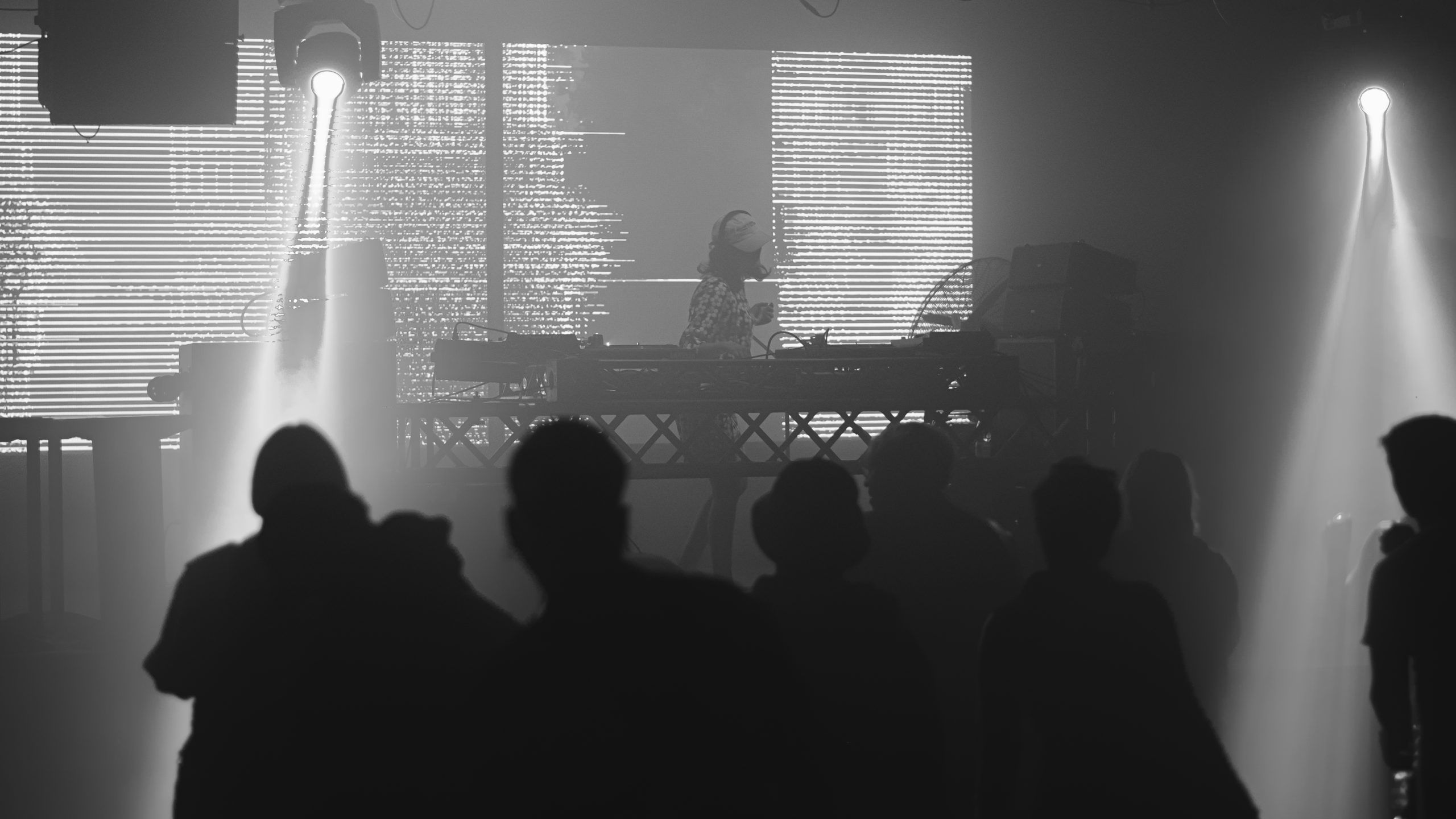
Maybe I arrived at a time when they were no longer doing so many things. When I showed up, people who were also doing it started to show up, and so today there are many people in different places who are doing it very well.
I just got caught by the boom of a scene here, in Puerto Montt, which opened me to a scene that I had never imagined. I’m super bad at social media, I’m just thinking about opening a website. I didn’t know how to use the platforms to show my work. It was word of mouth, talking to artists, working with producers, to the point that suddenly I already had the whole month full of events, or I had to move from region to region.
Many people were sure that my work was good, even more than me. One is more crafty with one’s own, I am never satisfied with my work. I always say: the best thing I have done is precisely what I don’t do, the best thing I have is what I still don’t do.
They started to call me, and suddenly the production companies started to work with international artists. I had the opportunity to work with Seatoc Mass with Regal, Perc.
Until then I wasn’t working with ideas for an artist, I was presenting my own work, whatever came to my mind at the stage I was at. The production companies respected that a lot, they gave me creative freedom: you show what you want. You had to make a good team and work together, be professional, what I could do well.
So, I worked with a Spanish artist Héctor Oaks who came to Chile and with whom we worked together in the way I’m telling you, and when I was back in Madrid, he wrote me to see if I was available for a couple of jobs. It was about the Sonar Lisbon and Barcelona this year, the 30th anniversary. I had had other opportunities in which international artists had asked me for my pendrives with work, which they then added to their sets. In this case it was different, he called me as a collaborator, giving me absolute freedom for what he called his first live concert proposal; an hour of live performance.
The concept was universal, which meant doing a lot of conversational work to be able to get inside his idea, what could be done visually from that. It was quite fluid, he gave me the typography of the album and I took that and created based on what he was doing. It was a nice experience, but we also saw that the fact that I was not operating the projections, the person who was doing it could make a mistake, and that was indeed the case on a couple of occasions. The important thing is that people saw the presentation and liked it. It was possible to receive criticism to learn from this instance, which led me to work hard to make sure that it was a narrated whole, thinking that I would not be operating the projections.
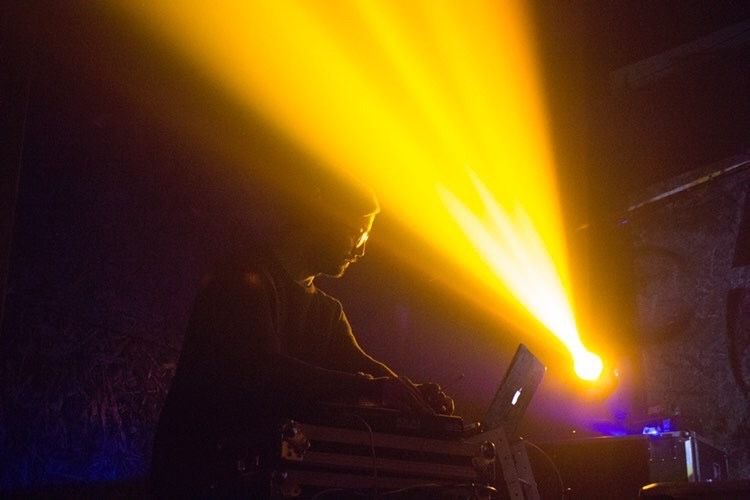
After that we started working with a multidisciplinary team, where I had to learn to work with other people, and also respecting the vision of a director who is transmitting his vision. It was difficult at first, because I was used to doing things differently, and you have to work on the ego as well. But now I have realized what a tremendous opportunity it is, beyond the fact that they correct your work, that there is a person who travels around the world with access to artists and technicians of the highest caliber who makes contact with a person from Puerto Montt, Chile, and takes him to this type of event. That is a sign that I am doing a good job, and it is an opportunity to learn. It has allowed me to rethink many things, and I am very happy.
What was it like to know that your visuals would be shown at Sonar?
At first I thought: I don’t want to fail this artist who is trusting my work. But then it was also realizing that it’s a tremendous platform, it’s Sonar in its 30-year version. Hector had taken my work to Scotland to a festival, and to another one in Melbourne as well, but what happened in Lisbon at Sonar was something I’m still assimilating.
After these experiences, what kind of atmosphere do you like best, do you prefer something quieter or smaller capacity, or did you like the experience of something more massive?
I like the scale of festivals. I think I feel less embarrassment, because it becomes less intimate, it’s functional. There is an area of work that I have already designed for that kind of proposal. You become a visual arts technician, you are doing your job, you are hired to do that.
In a space of experimentation, in a rave, for example, it becomes much more interesting for me, more enriching. That’s where I measure what I’m doing, where I consider self-criticism, I see where it takes me, where to continue.
The festival will always be a good way to show your work, to let people know how you do things, but not your discourse. You are not going to show precisely your work, but the way you have to address the requirements of others. At the rave I feel at ease, I’m allowed to do everything. I have been challenged more than once for doing something improper, or because my discourse was very political, but there I understand where my limits are, my field of action. It is very interesting.
Do you have any recommendations or advice for people who are starting out in this profession?
I think it has to be done. Do and try. Have the balls to lose the shame, forget about the rumors and the negative comments. Looking back, I can think that I was lame carrying my data everywhere, always trying to connect it, or that my computer was in very bad condition. Probably more than one person laughed at me, but I think about it now. At that time I never saw it, I wanted it so much that I didn’t care about the embarrassment and the precariousness.
You have to bear criticism, it is a valuable input of information as long as it is constructive and has an argument. Now I’m opening workshops on animation, film theory, on what the audiovisual medium means in the electronic scene. And I want that to happen, that we make a group, collectivity, and if you are overwhelmed by insecurities, there are several of us behind trying to follow. I work from the support, although I never had it. I don’t want that to happen again, I feel it as a responsibility.
How do you see the current scene, with the younger people, the digital natives?
I think what is needed is to look back. I think that nowadays all kinds of work is trivialized, they make it common, simple, turning you into an art critic just by moving your finger. Many people think they are doing it, but they don’t realize that what they are creating comes from a whole work of experimentation, of theorizing, an enormous intellectual work, from avant-gardes of 100 years ago, 200 years ago. There are people who do not understand the fundamentals, the work and complexities, the richness of the craft. I think that while it is impressive how young people handle technology today, they have to go back in history to realize that what they call avant-garde is nothing more than a postmodern product of the true avant-garde of more than 100 years ago.
I believe that what should never be lacking, in reality, is training. You have to educate yourself, even if you don’t have the knowledge of the past. You have to receive information and reflect. Self-education is very good, but with guidance, because the content is there, going around. In the end, that’s what art is all about, not a product, but a path of permanent self-knowledge.
